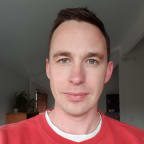Anyone logging into 1News.co.nz from their home office last weekend would have received some disturbing news about their apparently deteriorating bodies.

Photo: Furniture at Work UK
Under the headline 'Research reveals what remote workers could look like in the future', the site ran a series of pictures of a digitally-generated model dubbed 'Anna', along with a story describing her as a vision of what working from home could do to people by the year 2100.
As it turns out, not commuting into the office is more harmful than you might have thought.
"[Anna] is a grotesque figure, with claw hands, swollen limbs, red eyes and a hunched back, due to consistent use of laptops and smartphones, poor posture and an unhealthy diet," said 1News.
Terrible news, and even worse that this projection was purportedly based on research.
Except, as it turns out, it wasn't.
A cursory glance at this story's origins shows Anna was actually invented seemingly out of whole cloth by the Scottish company Furniture At Work UK - hardly a disinterested party when it comes to the working from home debate.
It seems rather than robust research, the story was a barely disguised ad for office furniture.
In fact, the link to the Furniture at Work UK blog introducing Anna later redirected to a page selling ergonomic desk chairs after it started being included in news stories. Good web traffic if you can get it.
1News eventually deleted its story.
But it was far from alone in spreading Anna across the internet.
Stuff also ran a story on Furniture At Work UK's invention with the headline 'Remote worker of the future could look like this, say researchers'.
They were following in the footsteps of a host of international outlets, including The Daily Mail and The New York Post.
It's not the first time Furniture At Work UK has employed this PR trick to great success.
In March, it convinced The Daily Mail to run a story on its similarly made-up vision of what offices could look like in the year 2050.
It's also not the only entity using dicey 'research' or so-called 'study results' to garner uncritical media coverage.
In May, 1News reported on a study which it said "cemented" the theory that garlic can help treat the flu or even Covid-19.
As it turns out the non-peer reviewed study it was citing was commissioned by the lobby group for Australia's garlic producers.
Experts described it as extremely early, lab-bench research which is unlikely to prove useful in clinical settings.
The list goes on.
Back in 2018, Stuff reported on what it called the surprising link between exercise and infidelity, while nzherald.co.nz ran a story about what it said were the 'most unfaithful professions'.
Both reports relied upon unscientific, self-selected surveys filled in by users of the infidelity friendly dating website Ashley Madison.
Hardly a carefully weighted poll.
Presenting arguments in the form of a study result can also help more credible, less infidelity friendly organisations dodge media scrutiny.
This is how Newstalk ZB's Roman Travers reported the conclusions of a tax survey carried out by the consultancy firm Sapere back in April.
"How many times in recent decades have we heard governments say the tax system needs to be looked at? I have some good news for those at the upper end of income-earning. It turns out our tax system is pretty fair and equitable after all," he said.
Case closed?
Tax researcher Max Rashbrooke, Oxfam and Tax Justice Aotearoa, among others, said that research failed to consider the amount of income the wealthiest New Zealanders are earning through capital gains.
The tax consultancy firm that commissioned Sapere, OliverShaw, admitted the study was an attempt to get ahead of IRD research which it thought might cast doubts on the fairness of our tax system.
Those concerns were well-founded.
That IRD research was released the following week and it concluded that the wealthiest New Zealanders were contributing an effective tax rate less than that of minimum wage workers.
In the eyes of some experts, the reporting on these types of studies highlights a weakness in the media's defences.
Most publications would never dream of running advertising for free, or publishing a highly ideological press release verbatim, but they may do so if the same information is presented in the form of research or study results.
The Science Media Centre recently highlighted the use of what it calls 'cloaked science', where technical language, difficult-to-understand graphs and charts, or seemingly scientific data are used to hide a political, ideological, or financial agenda.
Dr Sarah-Jane O'Connor, a teaching Fellow at Victoria University's Centre for Science in Society, said companies or motivated ideological actors use scientific-sounding messaging to piggyback on the trust people have in scientists.
"Science and research and scientists have a lot of trust already. It's good that the public and the media trust scientists but it means that people who want to get their own messages out, whether it's their own company's PR or even misinformation, might try to jump onto that bandwagon and use that same terminology about studies or new research published to borrow that air of credibility."
Reporters and editors should be on the lookout for signs a purported study is less than credible,' O'Connor said.
Her list of potential red flags for research or surveys included them having a small sample size, not being peer-reviewed or published by a credible academic journal, or being funded by a company with an economic interest in the results.
"We see a lot in health where we might see a new study come out saying such-and-such causes cancer and way down in the details we might find out the study was carried out on ten mice and it's not at all applicable to humans - or at least, not yet."
O'Connor advised journalists who might have questions about a study's credibility to contact the publicly-funded Science Media Centre for advice.


